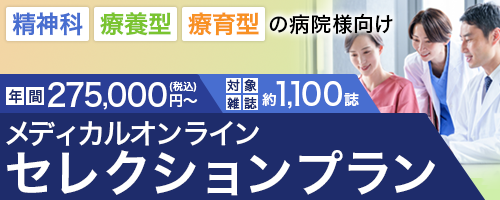アブストラクト
Japanese
| Title | 終末期がん患者における緩和ケア病棟移行時期の状態と終末期QOLとの関連 - 看護師の視点から - |
|---|---|
| Subtitle | 原著 |
| Authors | 奥村茂夫1, 薬袋淳子2, 成順月2 |
| Authors (kana) | |
| Organization | 1人間環境大学看護学部 看護学科, 2岐阜医療科学大学・大学院 看護部看護学科 |
| Journal | ホスピスケアと在宅ケア |
| Volume | 30 |
| Number | 1 |
| Page | 3-14 |
| Year/Month | 2022 / |
| Article | 原著 |
| Publisher | 日本ホスピス・在宅ケア研究会 |
| Abstract | 「要旨」【目的】がん患者の緩和ケア病棟移行時の状態と終末期QOLの関連を明らかにすることである. 【方法】緩和ケア病棟に勤務する看護師193人を対象に, 自記式質問紙を用いた後ろ向き観察調査を行った. 【結果】看護師160人から318事例について回答を得た. GDI得点は, 移行時の患者状態が, 経口摂取あり群(標準化係数0.210, p=0.001)でなし群より有意に高く, せん妄あり群(標準化係数-0.179, p=0.002)はなし群より, 移動介助必要群(標準化係数-0.149, p=0.010)は不要群より有意に低く, 看護師の緩和ケア経験年数(標準化係数0.111, p=0.048)が長いほど有意に高かった. 【結論】緩和ケア病棟での最期を希望するがん患者にとって, 経口摂取ができ, せん妄がない状態, 移動介助が不要な状態である時期に移行することが, その後のQOLに良い影響を与えることが示唆された. |
| Practice | 看護学 |
| Keywords | GDI, 経口摂取, せん妄, 移動介助, Oral intake, delirium, mobility assistance |
English
| Title | Relationship between Status at the Time of Transition to a Palliative Care Unit and Quality of Life Toward End-of-Life in Cancer Patients - From the Perspective of Nurses - |
|---|---|
| Subtitle | |
| Authors | Shigeo Okumura1), Junko Minai2), Jungetsu Sei2) |
| Authors (kana) | |
| Organization | 1Department of Nursing, Faculty of Nursing, Human Environment University, 2Department of Nursing, Faculty of Nursing, Graduate School of Health and Medicine, Gifu University of Medical Science |
| Journal | Hospice and home care |
| Volume | 30 |
| Number | 1 |
| Page | 3-14 |
| Year/Month | 2022 / |
| Article | Original article |
| Publisher | Japanese Society of Hospice and Home-care |
| Abstract | [Abstract] [Objective]: This study aimed to clarify the relationship between the status of cancer patients at the time of their transition to a palliative care ward and their quality of life (QOL) toward end-of-life. [Methods]: A backward-looking survey with a self-administered questionnaire was used to collect data from 193 nurses who worked in a palliative care ward. [Results]: A total of 160 nurses responded on 318 cases. In the group with oral intake, the standardized coefficient was 0.210 (p=0.001). The standardized coefficient was -0.179 (p=0.002) in the group without delirium. The number of years of palliative care experience of nurses (standardized coefficient 0.111, p=0.048). [Discussion and Implications]: For cancer patients who wish to spend their final days in a palliative care ward, moving to the ward at a time when they can manage oral intake, are free of delirium, do not require mobility assistance, and has a positive impact on their subsequent QOL. This suggests that they can have a better quality of life towards their end-of-life. |
| Practice | Nursing |
| Keywords | GDI, Oral intake, delirium, mobility assistance |
- 全文ダウンロード: 従量制、基本料金制の方共に770円(税込) です。
参考文献
- 1) Temel JS, Greer JA, Muzikansky A, Gallagher ER, Admane S, Jackson VA et al. Early palliative care for patients with metastatic non-small-cel lung cancer. N Engl J Med 2010;363:733-742.
- 2) Teno JM, Shu JE, Casarett D, Spence C, Rhodes R, Connor S, et al. Timing of referral to hospice and quality of care:length of stay and bereaved family menbers' perceptions of the timing of hospice referral. J Pain Symptom Manage 2007;34:120-125.
- 3) WHO世界保健機構. 緩和ケア定義. http://www.who.int/cancer/palliative/definition/en/(2017年9月3日アクセス).
- 4) 瀬山留加, 石田和子, 中島陽子, 吉田久美子, 角田朋美, 神田清子. 大学病院における終末期がん患者が抱える日常生活動作の障害と看護支援の検討. 群馬保健学紀要 2008;29:31-33.
- 5) Romero SAD, Jones L, Bauml JM, Li QS, Cohen RB, Mao J. The association between Fatigue and pain symptoms and decreesed physical activity after cancer. Support Care Cancer 2018;26:3423-3430.
残りの19件を表示する
- 6) 吉田みつ子. 痛みのある癌患者の日常生活の安寧感と痛みのコントロール日本看護科学会誌 1997;17:56-63.
- 7) Morita T, Miyashita M, Tsuneto S, Kazuki S, Yasuo S. Late referrals to palliative care units in Japan:nationwidefollow-up survey and effects of palliative care team involvement after the Cancer Control Act. J Pain and Symptom Management 2009;38:191-196.
- 8) 稲森真弥, 手島慶子, 芝田明子, 惣田美由紀, 山畑幸恵, 高木啓子. 医師, 看護師が考える緩和ケア病棟への移行時期・判断根拠の分析. 山口大学医学部付属病院看護部院内看護研究発表会集録 2004;平成16年度巻:33-36.
- 9) 永田勝太郎. QOL全人的医療がめざすもの. 第2版, 講談社, 東京, 1992;36-38.
- 10) Miyashita M, Morita T, Sato K, Kei H, Yasuo S, Yosuke U. Good Death Inventory:A measure for evaluating good death from the bereaveed family member's perspective .J Pain Symptom Manage 2008:35:486-488.
- 11) 櫻井 智穂子, 眞島朋子. 終末期の緩和を目的とした療養への移行におけるがん患者の家族の決断の"ゆれ"に関する研究. 文化看護学会誌 2013;5:20-27.
- 12) Mitchell H. Katz(2006)/木原雅子, 木原正博(2008):医学的研究のための多変量解析-一般回帰モデルからマルチレベル解析まで(第1版), メディカル・サイエンス・インターナショナル, 東京.
- 13) Gartner J & Buche D. Das Delirante Syndrom in der Palliative Care:Frische Evidenz und alte Weisheiten. Ther Umsch 2018;75:91-100.
- 14) 大谷眞二, 山本直子, 佐藤尚喜, 松波馨士, 岡本幹三, 黒沢洋一. 終末期がん患者における呼吸器症状と輸液量の関係. Palliat Care Res 2012;7:185-191.
- 15) 大谷真二, 栗田啓, 野崎功雄, 太田耕司, 久保義郎, 棚田稔, ほか. 高度進行胃癌に対する胃空腸吻合術の検討. 日臨外会誌 2007;68:1064-1069.
- 16) Murai M, Higashiguchi T, Ohara H. Multicentric prospective study of effect of dietary intake on quality of life for patients with end-stage cancers. Fujita Med J 2020;6:1-6.
- 17) 菊井和子, 竹田恵子. 嚥下困難をきたした終末期高齢者の食事援助に関連する倫理的課題. 川崎医療福祉学会誌 2002:12:83-90.
- 18) Hosie A, Ager M, Lobb E, Davidson PM, Phillips j. Palliative care nurses' recognition and assessment of patients with delirium symptoms:a qualitative study using critical incident technique. Int J Nurs Stud 2014;51:1353-1355.
- 19) 青木美和, 荒尾晴恵. 終末期がん患者のせん妄ケアを実践している看護師のアセスメント視点. Palliative Care Research 2017;12:203-210.
- 20) Leonard M, Agar M, Mason C, Lawlor P. Delirium issue sin palliative care settings. Journal of Psychosomatic Research 2008;65:289-298.
- 21) 木元道雄, 岸本寛文, 西ひろみ. 緩和ケア病棟の入院判定の適正化, 公正化の試み. Palliat Care Res 2015;10:917-921.
- 22) 宮下光令, 小野寺麻衣, 熊田真紀子, 大桐規子, 浅野玲子, 小笠原喜美代, ほか. 東北大学病院の看護師のがん看護に関する困難感とその関連要因. Palliat Care Res 2014;9:158-166.
- 23) 松下亜由子, 峯真司, 熊谷厚志, 井田智, 望月宏美, 中濱孝志, ほか. がん終末期患者における経口摂取状況と管理栄養士介入に関する検討. 日本静脈経腸栄養学会誌 2017;32:1324-1328.
- 24) 工藤由紀, 伊藤郁乃, 新藤直子, 永井英明, 辻哲也. 終末期がん患者におけるトイレ歩行の実態調査-リハビリテーション介入についての考察-. Palliat Care Res 2015;10:217-222



